Family-style meals—putting all of the food for a meal on the table and allowing everyone to serve themselves—is an approach that can have such a positive impact. It can improve what the kids eat and the mood of everyone at the table. Here’s how to do it, some tips to keep in mind, and how to streamline dishes to avoid a full sink.
Family Style
Before I tell you that serving meals family style will solve all your problems—because I know you won’t believe me—let me say I’ve been serving meals in this way for 9 years. My oldest daughter was fed this way at her day care and I adopted it since it seemed to work so well for her.
And then I read about why this method works so well in the words of experts including Ellyn Satter and I was totally hooked.
My goal with family meals is to create an environment where everyone gets to enjoy each other’s company, not to get the kids to eat a certain amount of vegetables. It’s to lessen my workload and avoid making more than one meal.
I’ve found that the happier meals can be, the more the kids can relax and feel safe, which may, one day, help them to eat a broader range of foods.
Table of Contents
- Family Style
- What does it mean to serve a meal family style?
- How Family-Style Meals Can Improve Picky Eating
- How to Serve Family-Style Meals Step-by-Step
- What if my child only wants one of the foods?
- What if my child asks for a food that's not on the table?
- What's a good age to start serving family-style meals?
- This method seems like it makes a lot of dishes to clean up—any tips?
- What is the most popular family-style meal?
- Bottom Line on Family-Style Meals
Your toddler won’t eat? Help is here!
Sign up for our email updates to get tips and ideas sent to your inbox.
What does it mean to serve a meal family style?
So let’s back up a moment and go over the basics. “Family style” is a method where you put all of the components of a meal onto the table and allow everyone at the table to serve themselves. Typically this involves big serving dishes and plates in the middle of the table so everyone can reach the food.
An added benefit of serving family meals this way is that you’ll have everything you need for a meal on the table, so you won’t have to get up so many times to fetch things!
How Family-Style Meals Can Improve Picky Eating
While not all of the issues surround picky eating are related to power dynamics, a lot of them are—and serving meals family style can help even things out. This means that the kids won’t feel pressure to eat certain foods in certain amounts and they therefore won’t feel the need to push back against what you want.
They can simply look at what’s available, decide what and how much they want, and eat to their fill.
The entire mood of meals can change to become more pleasant and less stressful for everyone—including you since you no longer have to closely monitor every bite that your child takes!
And without the power struggle, there’s more of a chance for everyone to eat. It’s not magic, but it can help with the mealtime dynamics a lot.
How to Serve Family-Style Meals Step-by-Step
I’m going to walk you through exactly how to serve this style of meal to help you start this new routine in your house.
- Plan your meal, including 1-2 foods your child usually likes.
- Cook/assemble the meal.
- Bring the foods to the table on serving plates (or the pot you cooked them in) and place into the center of the table.
- Add any side dishes, sauces, dips, and drinks that anyone may need.
- Explain what the foods are to the kids as needed. Compare new foods to foods they like describing colors, flavors, textures, and smells.
- Let the kids tell you which foods they want and help them to serve themselves.
- If anyone takes more than their share, remind them that we all need to have some food before we can have seconds.
- Avoid forcing kids to try any one food, though do encourage them with the tips in Step 5.
- Don’t worry if they don’t hit all the food groups. (Think of their intake over the course of a day or a week, not by meal.)
- Serve yourself, enjoy your meal, and talk about topics other than the food.
TIP: Toddlers love to serve themselves, so help them if they need a little assistance, but do let them have some interaction with the serving part to make sure they feel in control of what’s going onto their plates.
What if my child only wants one of the foods?
Fundamentally, it’s OK. If you can think of their intake over the course of a day or an entire week, things will likely be much more balanced than if you focus in closely on each meal. Let them enjoy the foods they want—the same as you’d like to do at a meal—and try to put the happiness of a meal over the nutrition.
It can also help to change the subject away from food to get them to talk about something from their day, or a favorite topic or character. Ask them to tell you a joke or a story. Ask them what they plan to be for next Halloween (even if it’s January!), to sing their favorite song, or to tell about their friends.
The more you can engage with the kids about other topics, the more you can enjoy the time together. (And they just might be calm enough to actually eat their food!)
What if my child asks for a food that’s not on the table?
A phrase I like to use is “not every meal will be our favorite but we can still eat it.” This isn’t forcing food but is reminding kids that we all have favorite foods. Allow the kids to serve themselves from the foods they want from what you’ve served and don’t insist that they take a certain amount of anything. And tell them a specific time they can have that favorite food (if possible) to remind them they will have that food in the near future.
We have a list of favorite dinners from each of the kids on our fridge, and it’s really helpful for me to reference when I’m planning meals.
TIP: Read up on the feeding principle called the Division of Responsibility for more on what you and the kids are each responsible for at meal times.
What’s a good age to start serving family-style meals?
You can start doing this style of feeding as soon as the kids start joining you at the table, though it works particularly well to start it by the time a kiddo turns 2 OR shows signs of increased pickiness. The more you can set the stage to have less pressure around meal times, the happier everyone will likely be.
This method seems like it makes a lot of dishes to clean up—any tips?
If you feel like you’re creating a mountain of dishes to wash, try putting multiple components of one meal on one large platter or bowl. You can also have the kids help to fill the dishwasher or even limit the number of foods in any given meal to reduce the dishes.
What is the most popular family-style meal?
You can really do this with any meal—even if it’s a one-pot recipe!—though it works particularly well with “deconstructed” meals with multiple components. This way everyone has more choices and can eat the components of, say tacos, on their own terms rather than mixed together or assembled for them.
Some other meals to try:
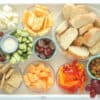







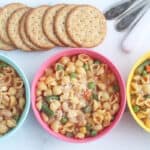

TIP: If you have a small table or would rather not have all of the food on the table, you can line everything up on the counter and do the same method. You can also serve any main dish with sides or toppings and call it a family-style meal!
Bottom Line on Family-Style Meals
If you can remember that the big goal here is to raise happy eaters, rather than getting them to eat a certain amount of any one food, this method of serving family dinner can help everyone enjoy their time together in a much bigger way. And that is a truly wonderful thing!
Related Recipes
This post was first published May 2020.
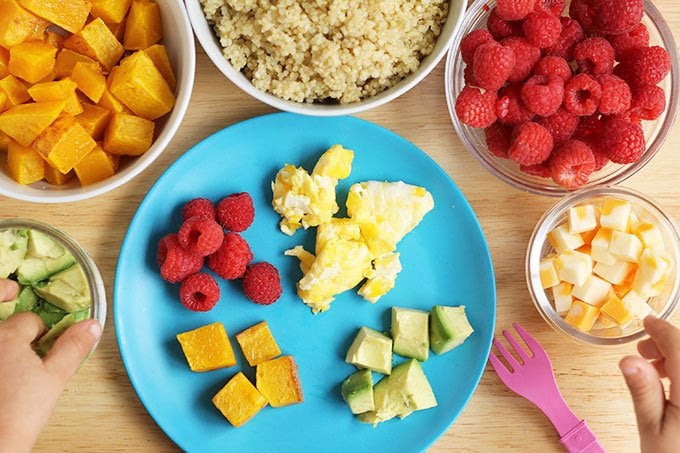
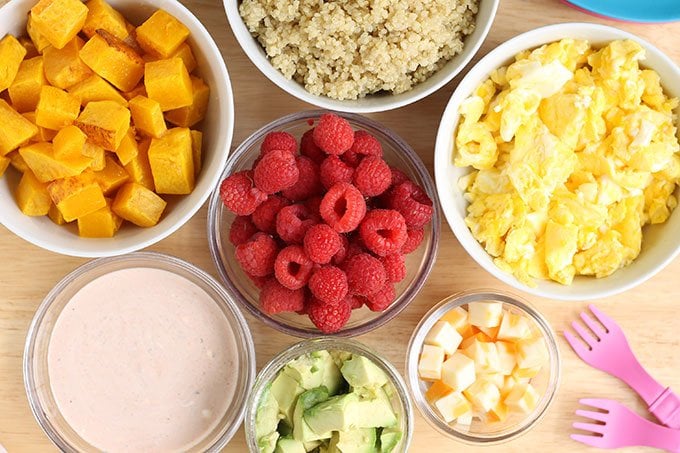
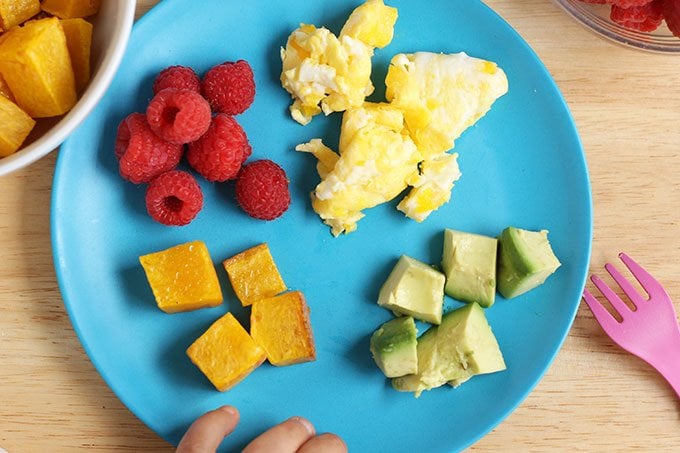
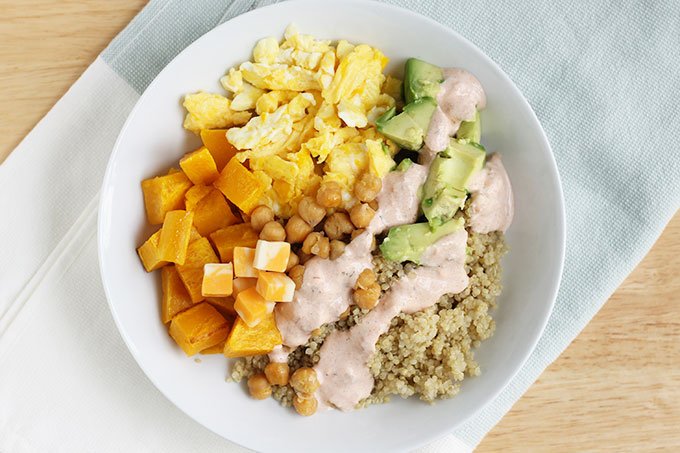
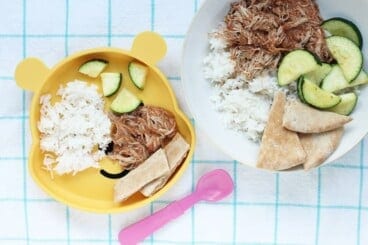
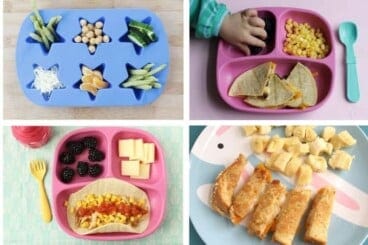
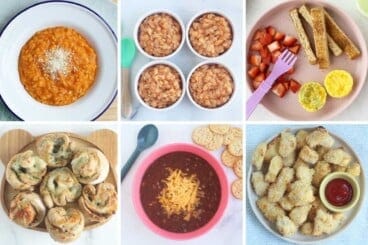
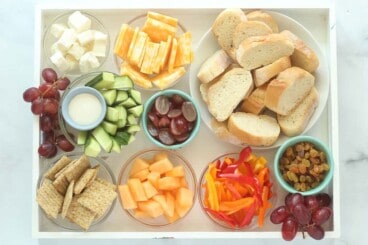
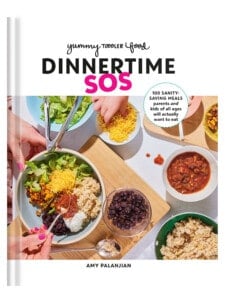
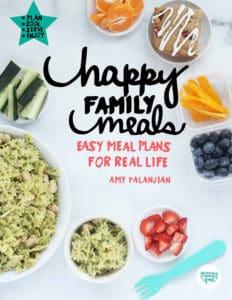
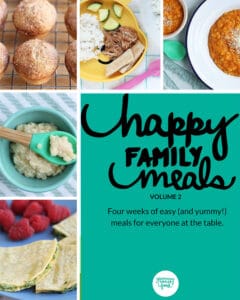
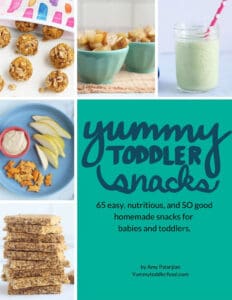















Love this. Do you have a recipe for the meal in the pictures in this post? It looks delicious (eggs, quinoa, chickpeas, squash, but what is the sauce?) but I cannot seem to find it in the list of family recipes?
Hi- The sauce is half sour cream and half pureed salsa, so it works as a grain bowl with a Mexican-ish sauce. So yummy!
Thanks for these ideas. They are great. I always thought family style means eating together ans that’s not always possible at our home. Good to know that family style involves serving meals in a certain way.